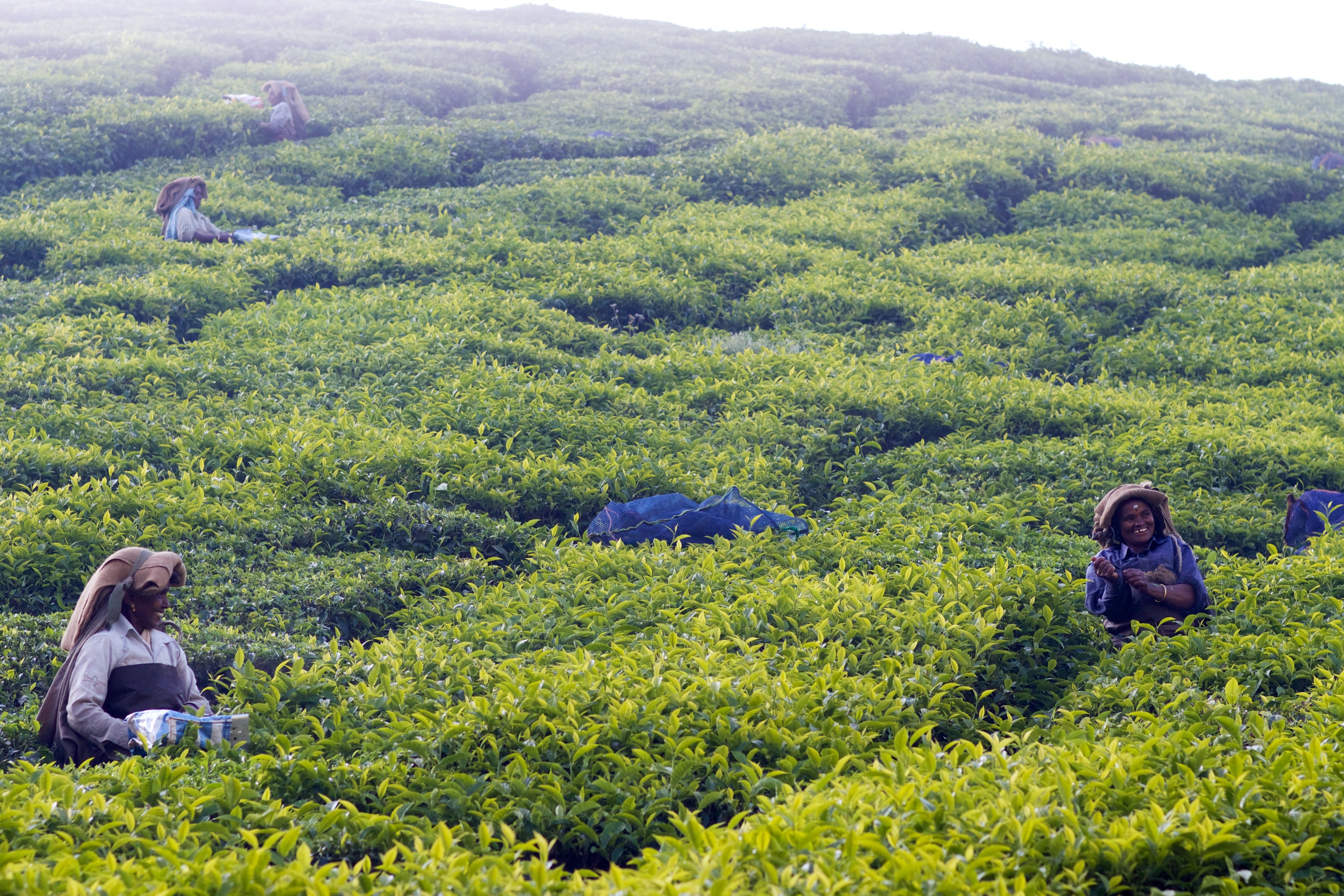The Journey of Tea: From Plant to Pot
Tea is grown in many regions across the world and enjoyed universally, with over 10,000 different variations. From, White, Blue, Green, Black and Red (in Chinese culture, what we call Black tea is “Red” and Black is aged Pu-Erh), all traditional teas come from the camellia plant. Camellia is native to China and India and now growing in many other parts of the world. Tea plantations are found in many beautiful landscapes. This is where the ultimate journey of tea begins.
The question is, how does it travel to our eagerly awaiting tea pots?

This is the Journey of Tea…
Over 200 species of camellia plants are registered today. However, only one, the camellia sinensis can be used for the production of tea. The most ancient variety used in the cultivation of tea, ‘sinensis’ means ‘from China’ – where tea was originally discovered.
The tea plant thrives within tropical or subtropical climates. It is not very resistant to wintery conditions. The most suitable climates offer temperatures ranging from 10-35 degrees Celsius and rainfall of between 200 and 230cm a year.
Just like us, tea plants have certain elements that enhance their life. The latitude at which they are grown is one of these, having a huge impact on their growth. Plantations are often located at high altitude, on the steep slopes of mountain ranges. However, they can also be found growing on plains.
Today planters carefully select ‘mother plants’ for their ability to:
- Grow vigorously
- Give a high yield
- Resist pests, drought or flooding
- Produce a high-quality leaf.
Cuttings and cloned leaves taken from these parent bushes allow planters to produce new stock by vegetative propagation.
Tea leaves are harvested all year round in some regions. In others, the tea plants enter a period of dormancy caused by lack of sunlight. This dormant period is actually highly favourable for the production of good quality tea. The plant awakens in spring, ready for the first harvest of the year with more concentrated aromatic ingredients.
Harvesting the Tea Leaves
A dominant factor that affects the method used for the harvesting of tea leaves is accessibility. For tea plantations set on steep mountain sides with limited accessibility, hand picking is the only way. Pickers pinch the delicate shoots between their thumb and forefingers, according to the picking style that they are following.
Delicate hand picking is required to harvest the finest quality teas (often done with the nimble fingers of women). There is even a style known in China as being reserved for Emperors in ancient times. This is referred to as ‘imperial picking’ and also known as ‘super-fine’ picking. With this picking style, it is the bud and just the first single leaf that are delicately picked.
Tea plantations in accessible locations, such as on the humid plains of Kenya, are fast growing with a heavy harvest. In these situations, a larger scale of picking style is required, even machines are used to harvest the tea. The terrain allows for modern technology to sweep through the rows of plants, producing a much larger quantity and weight. These large-scale harvests mostly make their way into our everyday tea bags.
If the tea is not growing all year round; picking typically occurs twice a year, during early spring and early summer. Production of these teas depends on the type of tea that’s created.
Production of Tea Worldwide
Amongst many nations currently producing tea, China and India are the two largest producers, closely followed by Kenya. China produces an average of 1.1M tonnes a year and India an average of 9M tonnes a year. Much of the production in these countries is consumed at home, compared to Kenya, which is a major exporter. China proudly produce several varieties of tea. Including Green, Oolong, White, Pu-erh, Yellow, and Jasmine teas, to name but a few. India exclusively produces the popular Assam and Darjeeling varieties as well as spicy Chai blends.
So, just how do we get so many delicious varieties of tea?
Leaves that are to be used for black tea undergo a withering and rolling process. This allows some of the water content in the leaves to evaporate, before rigorous oxidation, where they are laid on racks. This oxidation is the process that turns the leaves from green to the brown and black colours that we recognise. On the other hand, Green tea is dehydrated to prevent this process of oxidation occurring. Therefore, it retains its ‘green’ characteristics, with no chemical change occurring during its manufacture. Of course, in addition to ‘natural’ teas, we also enjoy teas infused with flavours of flowers, fruits or spices. Some flavourings have been used for centuries but new ones are constantly entering the market and finding new fans.
The global demand for tea is constantly on the rise. This has resulted in the majority of teas being exported to the west, or elsewhere, being industrially produced. Refreshing traditions however, will always remain with rich, cultural history keeping tea production a work of art.
Explore our Teas
Remember, when you are brewing one of our delicious teas you are honouring each small, significant step that tea has taken, from leaf to cup.
